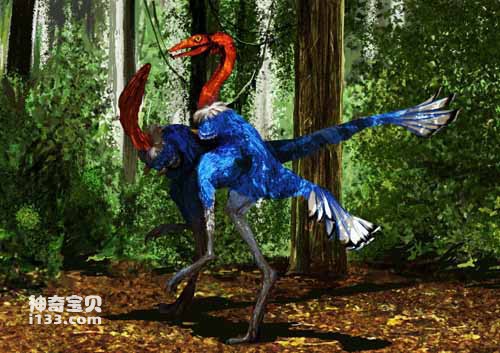Chinese name: Single-clawed dragon
Latin name: Mononykus
Age of survival: Late Cretaceous
Fossil origin: Mongolia
Physical characteristics: 1 meter long
Diet: carnivore
Type: Theropod
Definition: One-clawed lizard

Mononychus is a small theropod dinosaur, related to birds. It lived in the Late Cretaceous about 70 million years ago and was mainly distributed in southwestern Mongolia.
The history of its discovery can be traced back to the 1920s, when the third Central Asia expedition led by Andrews of the New York Museum of Natural History entered the desolate Mongolian Gobi. This expedition was fruitful, and one of the epoch-making discoveries was the first nest of dinosaur eggs in the history of dinosaur research. In 1923, an expedition team discovered an incomplete fossil in the Gobi. It consisted of vertebrae, hind limbs and a belt called an "unknown bird-like dinosaur." After its discovery, paleontologists regarded it as an ordinary small theropod fossil, so the fossil was shelved after being brought back to the United States.
By the 1990s, paleontologists returned to the Mongolian Gobi. This time they found a fossil of a turkey-sized dinosaur with bird-like hind limbs and tiny forelimbs. This fossil belongs to the same dinosaur as the long-lost fossil discovered in 1923. After preliminary research, they realized that they had discovered a new species of theropod dinosaur, and surprisingly named it "Mononychus". Regarding naming, there is an interesting episode. Mononychus was originally named "Mononychus". Later, paleontologists learned that the spelling of "Mononychus" was the name of a beetle genus, so they changed it to "Mononykus".
Take a closer look at Mononychus. It has a pair of light bones, a long tail and slender legs. The most surprising thing is its forelimbs with only one claw. This thick and strong claw is so disproportionately large that it is directly connected to the only finger of Mononychus. The phalanges, ulna and humerus of Mononychus are very close in length, and the sternum has a large keel, which may indicate that the keel is attached to a large area of pectoral muscles. Based on these characteristics, the discoverers of Mononychus speculated that Mononychus' niche (the smallest distribution unit in each species' unique habitat) may be similar to that of modern aardvarks or anteaters, with their short and powerful forelimbs. A tool used to penetrate the soil and dig up underground ant nests or termite mounds. The slender hind limbs and flexible neck of Mononychus indicate that it should be a high-speed running athlete, which may be a means for it to escape from enemies.
Among the large family of modern birds, some birds are flightless, and most of them have strangely long wings. Ratites, such as ostriches, emus, and rheas, all have very small wings that cannot fly; penguins have wings that can be used when "flying" in the water (the ancestors of penguins were originally seabirds that were good at flying) ——The appearance is similar to modern petrels or puffins. Later, in order to adapt to life in the water, their wings gradually evolved to be short, like fish fins, which can paddle quickly in the water). The discoverer said: "At least the ancestors of Mononychus had this ability (Chinese birds and Iberias appeared 40 million years earlier than Mononychus and already had the ability to fly), and then one of them evolved into Mononychus." But. The vast majority of paleontologists and dinosaur paleontologists believe that Danguosaurus is a near-avian dinosaur, and its digging habit caused it to have a keel process similar to that of birds.
animal tags: Mononykus
We created this article in conjunction with AI technology, then made sure it was fact-checked and edited by a Animals Top editor.